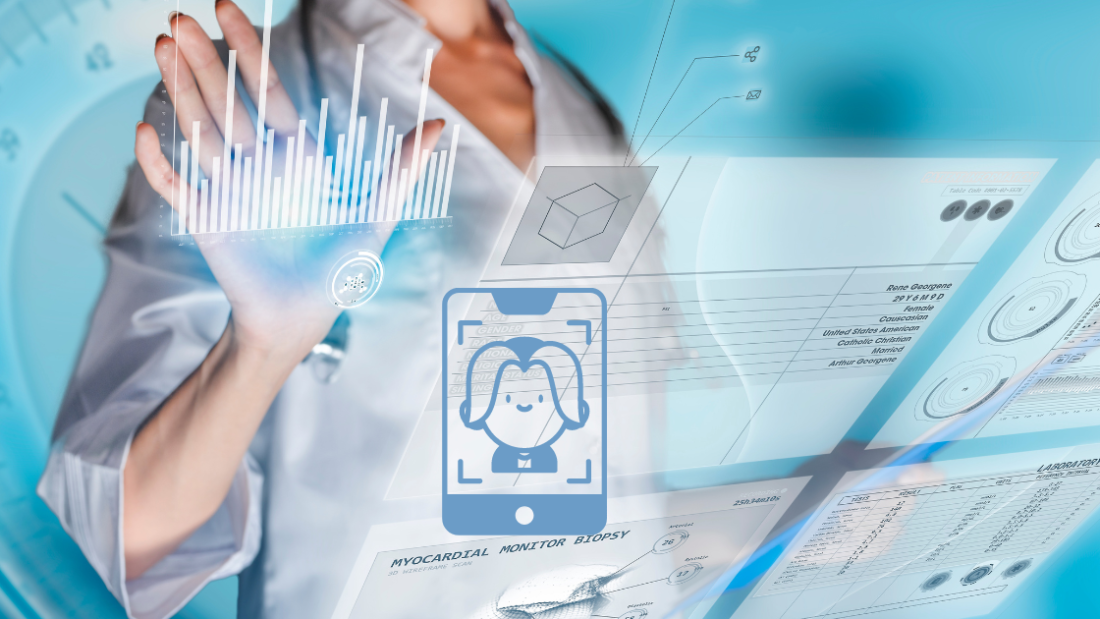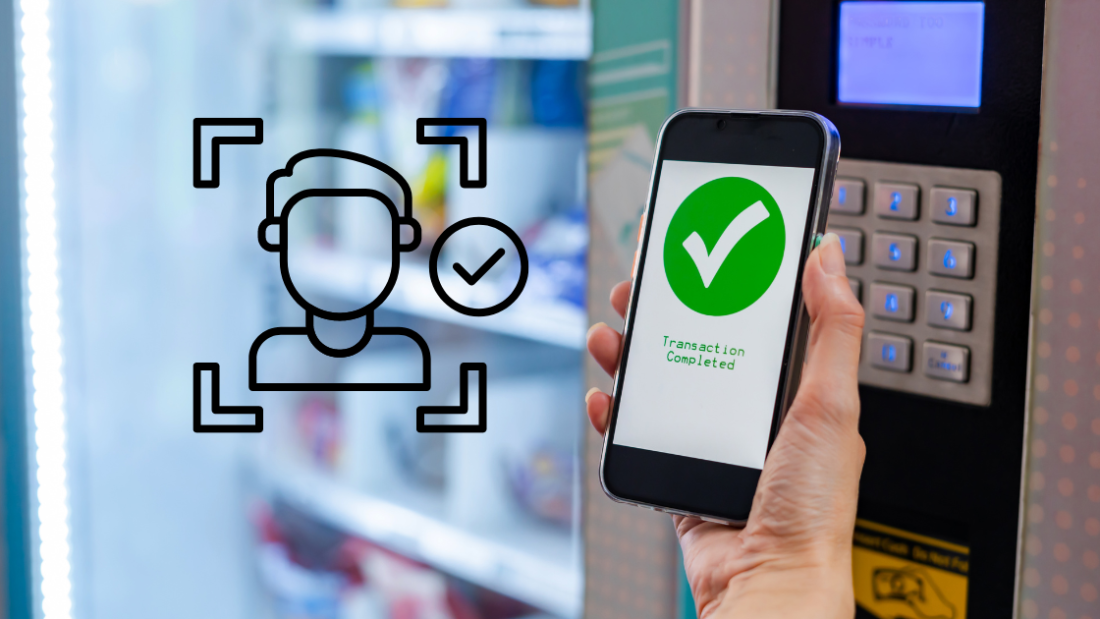Face liveness detection, a cutting-edge technology using computer vision, plays a crucial role in safeguarding digital identities against fake faces. By verifying that a live person with real faces, not a photo or video, is present during authentication, this innovative solution enhances security measures significantly with face detection. As online threats continue to evolve, the need for robust authentication methods including username validation becomes paramount. Face liveness detection, using biometric authentication, distinguishes between fake and real faces, employing computer vision to offer a reliable and efficient way to prevent unauthorized access and fraudulent activities. This technology’s ability in biometric authentication, face detection, computer vision, and deep learning to distinguish between a real person and a static image marks a significant advancement in identity verification methods.
Discover the cutting-edge technology of face liveness detection in digital health records. Stay ahead with our comprehensive guide and advancements.
Digital Health Records Overview
Efficiency
Digital health records play a crucial role in efficient healthcare management by providing instant access to patient information. This accessibility ensures that healthcare providers can quickly retrieve essential data during consultations and treatment.
Moreover, digital health records streamline administrative processes, reducing the time spent on paperwork and allowing medical professionals to focus more on patient care. By automating tasks such as appointment scheduling and billing, healthcare facilities can operate more smoothly and efficiently.
Patient Care
One significant benefit of digital health records is the improvement they bring to patient care. With all medical information stored electronically, healthcare providers have a comprehensive view of a patient’s health history, medications, allergies, and previous treatments.
This comprehensive overview enables doctors to make more informed decisions about patient care, leading to better treatment outcomes. Digital records facilitate communication among different healthcare providers involved in a patient’s care, ensuring seamless coordination and continuity of treatment.
Data Security
In today’s world, where data breaches are a growing concern, digital health records offer enhanced security and privacy measures. These systems employ encryption techniques to safeguard sensitive patient information from unauthorized access.
Furthermore, digital health records reduce the risk of errors associated with manual record-keeping practices. By minimizing the chances of misplacing or misinterpreting paper documents, electronic health records contribute to improved patient safety and quality of care.
Basics of Face Liveness Detection
Importance
Face liveness detection is crucial in biometric authentication, ensuring that a real person is present during the verification process. This technology enhances security by preventing unauthorized access through spoofing attacks.
Facial matching is the core concept of face liveness detection, comparing the face image captured during authentication with a stored template. By verifying the reliable face of the individual, this technology minimizes the risk of identity theft and fraud.
Technology Overview
Face liveness detection operates on advanced facial recognition algorithms, analyzing various facial features to determine if the presented face is live or a static image. These algorithms assess factors like eye movement, blinking, and facial expressions to validate the user’s presence actively.
One key aspect of face liveness detection is its ability to detect depth and texture in facial images, distinguishing between a three-dimensional face and a two-dimensional photo. This ensures a higher level of security in biometric authentication processes.
Distinction from Traditional Methods
Unlike traditional facial recognition methods that rely solely on static images for authentication, face liveness detection adds an extra layer of security by requiring real-time interaction. While facial recognition can be susceptible to spoofing with printed photos or videos, face liveness detection mitigates these risks by prompting users to perform specific actions during verification.
In essence, face liveness detection offers a more robust solution for identity verification by incorporating dynamic elements into the authentication process. This dynamic nature enhances the overall security posture, making it challenging for malicious actors to bypass biometric safeguards.
Security Needs in Healthcare
Data Security Measures
Healthcare systems require robust security measures to protect sensitive patient information. Implementing advanced security protocols is crucial to safeguard against cyber threats.
Ensuring data encryption and access controls are fundamental in maintaining the integrity of patient records. Regular security audits help identify vulnerabilities and prevent unauthorized access.
Consequences of Breaches
Security breaches in healthcare can lead to compromised patient data, resulting in identity theft and financial fraud. The exposure of personal health information can have devastating consequences for individuals.
Cyberattacks on healthcare organizations not only jeopardize patient privacy but also erode public trust in the healthcare sector. The financial implications of data breaches can be significant, impacting both organizations and individuals.
Regulatory Standards
Compliance with regulatory requirements such as HIPAA (Health Insurance Portability and Accountability Act) is essential for protecting patient data. Adhering to industry standards ensures confidentiality and integrity of healthcare information.
Healthcare providers must obtain patient consent before sharing or accessing their medical records. Maintaining transparency regarding data usage fosters trust between patients and healthcare organizations.
Liveness Detection for Secure Access
Enhancing Access Control
Face liveness detection significantly enhances access control in healthcare facilities. By implementing biometric liveness detection, organizations can ensure that only authorized personnel gain entry to restricted areas. This technology adds an extra layer of security beyond traditional methods like passwords or keycards.
Facial detection technology allows for secret authentication of individuals based on unique biometric characteristics. In healthcare settings, this means that only verified staff members can access sensitive patient information or medication storage areas. By incorporating surveillance cameras equipped with liveness detection, healthcare facilities can prevent unauthorized access and protect patient privacy effectively.
Advantages in Patient Information Access
The utilization of liveness detection offers numerous advantages for secure patient information access. Unlike conventional 2D authentication methods, such as passwords or PIN codes, biometric verification through facial recognition is nearly impossible to replicate or forge. This ensures that only authorized users can view or modify critical patient data, reducing the risk of breaches and identity theft.
Moreover, face liveness detection provides a seamless and efficient means of authentication for healthcare professionals. Instead of wasting time inputting passwords or carrying physical access cards, medical staff can simply use their faces to gain entry to secure areas. This not only streamlines workflow processes but also minimizes the chances of human error in authentication procedures.
Risks of Unauthorized Access
Unauthorized access to healthcare data poses significant risks to patient confidentiality and overall data security. Without robust liveness detection measures in place, malicious actors could potentially breach sensitive information, leading to identity theft, fraud, or even medical malpractice. The repercussions of such breaches extend far beyond financial losses and can impact patients’ trust in the healthcare system.
Inadequate access control mechanisms leave healthcare organizations vulnerable to internal threats as well. Disgruntled employees or individuals with malicious intent may exploit gaps in security protocols to gain unauthorized access to patient records or tamper with vital medical data. These breaches not only jeopardize patient privacy but also compromise the integrity of medical treatments and diagnoses.
Integrating Technology in Healthcare
Benefits
Integrating advanced technologies like face liveness detection in healthcare brings numerous benefits.
Face liveness detection enhances security by ensuring that only authorized individuals access sensitive information or restricted areas. This technology reduces the risk of identity theft and unauthorized access, safeguarding patient data.
Challenges
Despite the benefits, implementing technology-driven solutions in healthcare settings poses challenges.
One challenge is the initial cost of acquiring and integrating these technologies into existing systems. Healthcare providers may face resistance from staff due to training requirements and workflow disruptions during implementation.
Opportunities
The integration of advanced technologies presents exciting opportunities for enhancing healthcare services.
By leveraging face liveness detection, healthcare providers can streamline patient identification processes, reducing errors and improving efficiency. Furthermore, this technology enables remote patient monitoring, allowing for timely interventions and personalized care.
Impact on Patient Outcomes
The integration of technology in healthcare has a significant impact on patient outcomes.
Advanced technologies like face liveness detection enhance accuracy in patient identification, reducing medical errors and ensuring that individuals receive the right treatment. This leads to improved clinical outcomes and enhanced patient safety.
Operational Efficiency
Technology integration also boosts operational efficiency within healthcare organizations.
Advantages of Liveness Detection
Improved Security
Face liveness detection offers a more secure way of authenticating individuals compared to traditional methods. By verifying that a real person is present, this technology effectively prevents spoofing attacks where unauthorized users attempt to gain access by using photos or videos.
Liveness detection enhances security measures by adding an extra layer of protection against fraudulent activities. This process ensures that only the actual individual can access sensitive information or perform specific actions, reducing the risk of unauthorized access and data breaches.
User-Friendly Technology
The technology behind face liveness detection is designed to be user-friendly, providing a seamless authentication process for individuals. Unlike complex authentication methods that require multiple steps or passwords, liveness detection simplifies the user experience by utilizing facial recognition technology.
Users can conveniently authenticate themselves by simply way of verifying their identity through facial recognition, eliminating the need to remember passwords or carry physical tokens. This streamlined control over authentication processes not only enhances user convenience but also improves overall security by reducing the chances of human error in authentication.
Enhanced Individual Control
One key advantage of face liveness detection is the enhanced control it provides to individuals over their own security. By incorporating biometric data such as facial features, this technology allows users to have greater assurance that their identities are being accurately verified.
Individuals can feel more confident in the security of their personal information when utilizing liveness detection technology, knowing that their identities are being protected through advanced biometric authentication methods. This increased level of individual control empowers users to securely access their accounts and sensitive data without relying on easily compromisable passwords or PINs.
Overcoming Implementation Challenges
Integration Strategies
Implementing face liveness detection in healthcare settings can present various challenges. One common obstacle is the integration of this technology with existing systems. Organizations often struggle to seamlessly incorporate face liveness detection into their workflow due to compatibility issues.
To overcome integration challenges, organizations should prioritize selecting solutions that offer flexible integration options. By choosing technologies that can easily interface with existing systems, healthcare providers can streamline the implementation process and minimize disruptions to daily operations.
Moreover, conducting thorough testing and pilot programs before full-scale deployment can help identify and address any integration issues early on. This proactive approach allows organizations to fine-tune the implementation process and ensure a smooth transition to using face liveness detection technology.
Staff Training and User Education
Another critical aspect of successful face liveness detection implementation is training staff and educating users. Training staff members on how to effectively use the technology is essential for maximizing its benefits and ensuring accurate results.
By providing comprehensive training sessions, healthcare organizations can empower their employees to leverage face liveness detection tools effectively in their daily tasks. This not only enhances operational efficiency but also boosts overall accuracy and performance of the system.
Educating users, such as patients and visitors, on the importance of face liveness detection and how it enhances security and privacy measures is equally crucial. By raising awareness about the purpose and benefits of this technology, organizations can foster trust among users and encourage widespread adoption.
Continuous Monitoring and Evaluation
In addition to integration strategies and user education, continuous monitoring and evaluation are key components of successful face liveness detection implementation. Regularly assessing the performance and accuracy of the system allows organizations to identify any potential issues or areas for improvement.
By setting up regular performance reviews and conducting periodic audits, healthcare providers can ensure that their face liveness detection technology remains effective and reliable over time. This proactive approach enables organizations to address any emerging challenges promptly and maintain high levels of security and accuracy.
Implementing face liveness detection in healthcare
Challenges with system integration
Importance of flexible integration options
Training staff members
Enhancing operational efficiency
Boosting accuracy and performance
Educating users
Raising awareness about security benefits
Encouraging widespread adoption
Future Trends in Biometric Security
Advancements in Liveness Detection
Face liveness detection technology is poised to revolutionize biometric security by enhancing authentication accuracy. By integrating liveness detection into biometric systems, the risk of spoofing attacks can be significantly reduced. This advancement ensures that only live individuals can access sensitive data or secure locations.
Biometric security measures are evolving to incorporate liveness detection techniques that analyze subtle facial movements or responses to stimuli. These advancements aim to mitigate the vulnerabilities associated with static biometric identifiers, such as photographs or videos. As a result, biometric security systems equipped with liveness detection offer a higher level of protection against fraudulent activities.
Diversification of Applications
Beyond traditional sectors like healthcare, the applications of biometric security are expanding into diverse industries, including banking and law enforcement. In banking, biometrics authentication security is increasingly used for secure transactions and account access. The integration of face biometrics in ATMs or mobile banking apps enhances user convenience while strengthening security measures.
Law enforcement agencies are leveraging biometric technology for criminal identification and investigation purposes. Facial authentication technologies enable quick and accurate identification of suspects, aiding in crime prevention and resolution. Moreover, biometric solutions play a crucial role in border control and immigration processes, ensuring efficient and reliable identity verification.
Emphasis on Innovation and Research
Continuous innovation and research are essential for advancing biometric security solutions to combat emerging threats effectively. Research efforts focus on improving the accuracy, speed, and reliability of biometric authentication systems, including face recognition technology. By investing in cutting-edge technologies and algorithms, organizations can stay ahead of cybercriminals who constantly devise new methods to bypass security measures.
Innovation in biometrics technology extends beyond hardware enhancements to encompass software development for enhanced user experience and security features. The integration of artificial intelligence and machine learning algorithms further enhances the performance of biometric access control technology, making systems more adaptive and responsive to changing environments.
Final Remarks
Incorporating face liveness detection in healthcare not only enhances security but also streamlines access to sensitive information. By embracing this technology, you can ensure that only authorized personnel can retrieve and update digital health records, safeguarding patient privacy and maintaining data integrity. Overcoming implementation challenges and staying abreast of future trends in biometric security will further fortify the healthcare system against potential breaches.
Take action now by exploring how face liveness detection can revolutionize security measures in healthcare. Stay informed about the latest advancements and consider integrating this innovative solution into your organization to uphold the highest standards of data protection. Your commitment to leveraging cutting-edge technologies will not only benefit your institution but also contribute to the overall advancement of secure access protocols in the healthcare industry.
Frequently Asked Questions
What is Face Liveness Detection?
Face liveness detection is a technology that verifies the authenticity of a face by ensuring it belongs to a live person, not a photo or video recording. It enhances security measures by preventing unauthorized access based on fake facial data.
How does Liveness Detection benefit healthcare?
Liveness detection in healthcare ensures secure access to sensitive data, protecting patient information from unauthorized individuals. By implementing this technology, healthcare facilities can enhance data security, reduce fraud risks, and maintain patient confidentiality effectively.
Are there challenges in implementing Face Liveness Detection?
Implementing face liveness detection may face challenges such as accuracy issues, user acceptance, and integration with existing systems. Overcoming these challenges requires thorough testing, user education, and seamless integration strategies to ensure successful deployment in healthcare settings.
What are the advantages of using Liveness Detection technology?
The advantages of liveness detection include enhanced security through biometric authentication, reduced fraud incidents, improved patient data protection, and streamlined access control processes. This technology offers a reliable and efficient way to verify user identity in healthcare environments while maintaining compliance with data privacy regulations.
What are the future trends in Biometric Security for healthcare?
Future trends in biometric security for healthcare include advancements in AI algorithms for more accurate liveness detection, integration with wearable devices for continuous monitoring, and the adoption of multi-factor authentication methods. These trends aim to strengthen data security measures and enhance user experience in healthcare settings.








